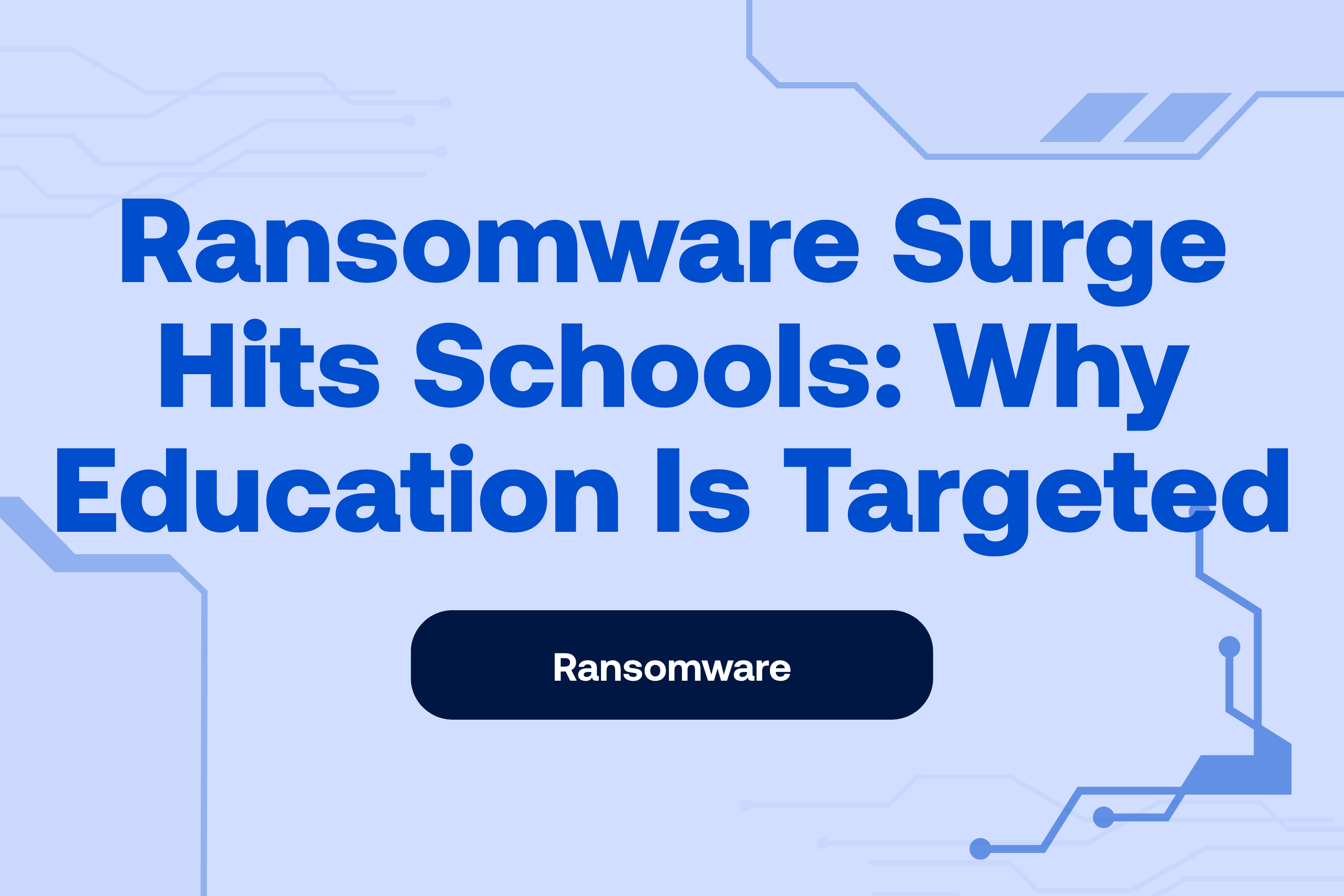
Across the United States, schools have become the fourth‑most targeted sector for ransomware. In the first half of 2025, confirmed and suspected ransomware attacks against public and private education jumped 23 % year‑over‑year, with at least 130 incidents reported. Attackers often use stolen credentials or exploit unpatched systems to take control of a district’s network, encrypt servers and then demand payment to restore access. Ransom demands averaged about $556,000, forcing school boards to choose between paying criminals or facing weeks of disrupted classes and huge recovery costs.
Many districts still lack the resources to mount a strong defense. Education budgets are tight, and until recently federal support for cybersecurity has been minimal. Yet the stakes are high: the public school population is nearly 50 million students, and districts maintain enormous amounts of personal data. A 2023–24 survey found that 82 % of U.S. K‑12 institutions experienced at least one cyber incident. When a ransomware attack hits, it not only forces schools offline; it threatens the privacy of families and staff and requires expensive identity‑protection services.
A notorious example involved a teenager who infiltrated PowerSchool, a widely used student information system. According to investigators, the 19‑year‑old hacker gained access to an internal support portal, downloaded names and Social Security numbers of millions of students and teachers, and then demanded payment. In total, he extorted about $2.85 million. Experts say this case underscores how even vendors can be a weak link in the supply chain: a single compromised credential can expose tens of millions of individuals.
Why is education such an attractive target? The pandemic accelerated digital learning, pushing districts to adopt cloud services and remote‑access tools faster than they could secure them. Many rely on legacy systems with poor patch management. Faculty and staff turnover is high, making it difficult to maintain consistent security practices. Ransomware gangs know that schools are under pressure to restore learning quickly; they often threaten to leak student data or call parents to increase leverage.
What can schools do? First, they must build a culture of awareness. Staff should be trained to recognise phishing emails, suspicious attachments and fraudulent payment requests. Instead of hour‑long lectures, platforms such as CyberNut offer 30‑second micro‑trainings with gamified leaderboards. These bite‑sized sessions can be sent monthly to remind staff about red flags. Second, districts need strong backup strategies and incident‑response plans. Ransomware often deletes backups stored on the same network; offline backups and cloud replication allow faster recovery. Third, they should implement multi‑factor authentication on all administrative accounts. The PowerSchool case demonstrates how a single compromised credential can lead to catastrophe. Finally, experts urge schools not to pay ransoms. Law‑enforcement agencies warn that paying simply signals to criminals that they have an easy target and funds other illicit activities.
The trend of rising ransomware attacks will likely continue until districts take proactive measures. Cybersecurity is no longer optional; protecting students, teachers and school operations requires investment in training, technology and resilience. By partnering with dedicated educational security platforms and leveraging upcoming federal programs, schools can begin to turn the tide.